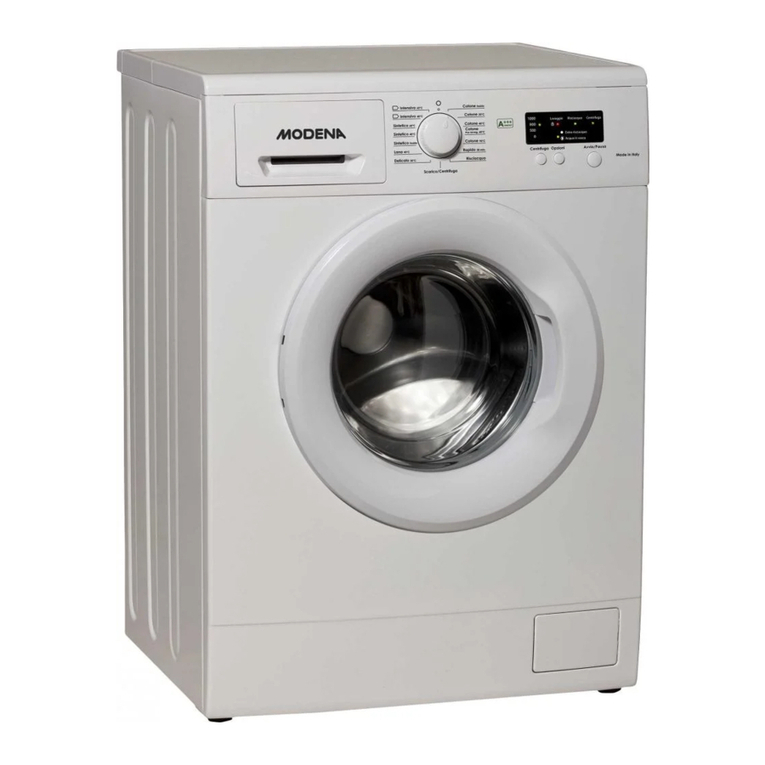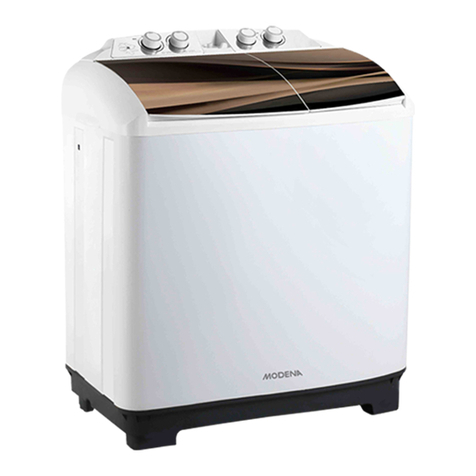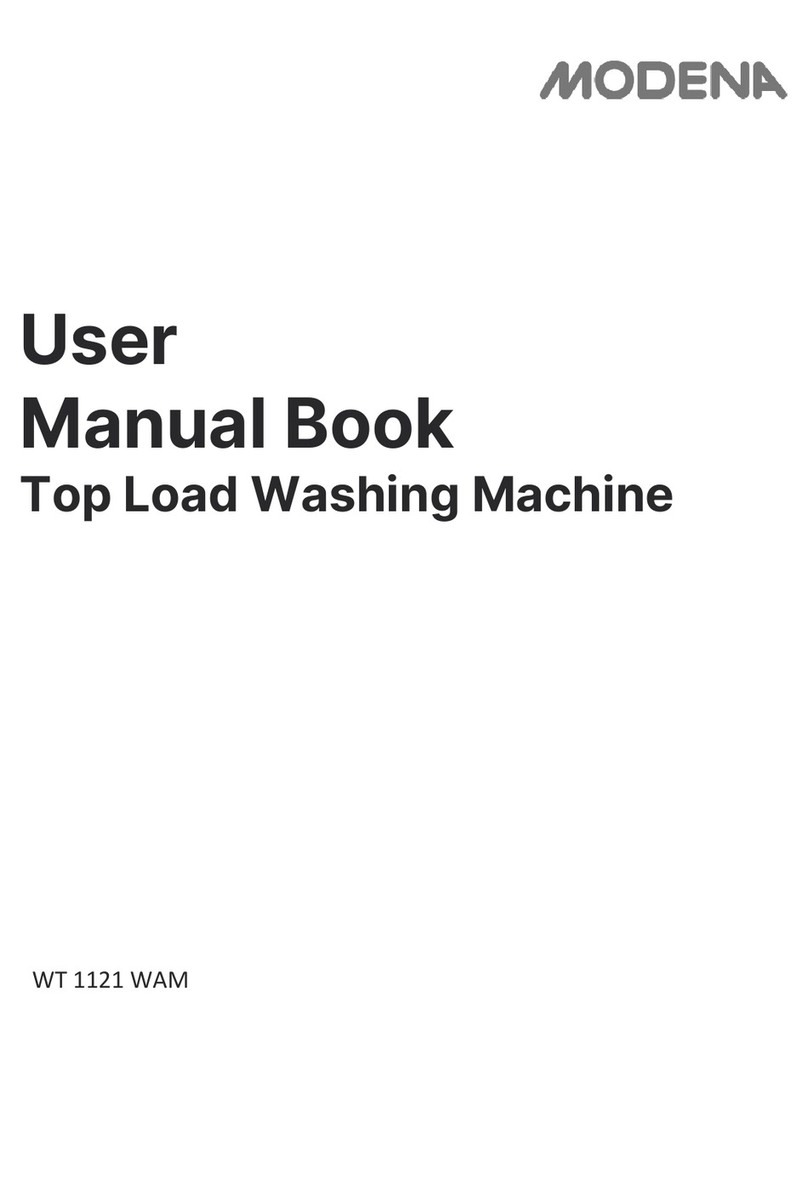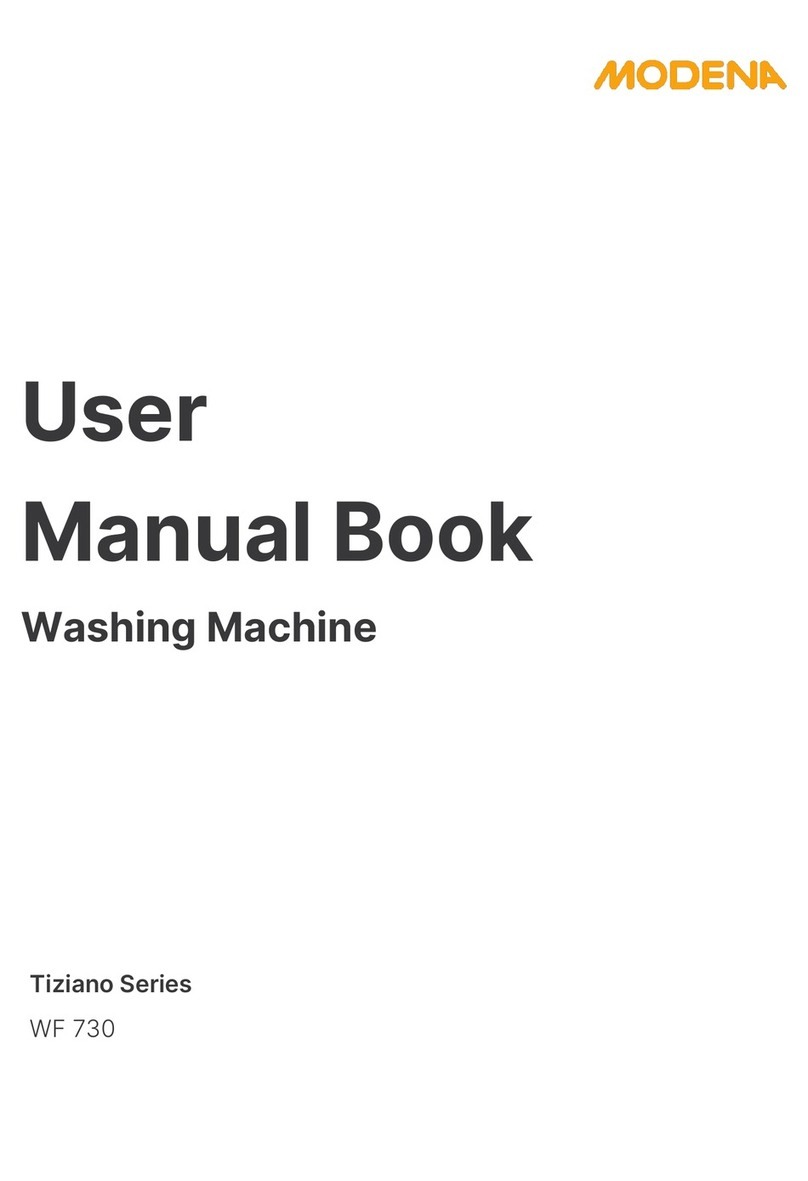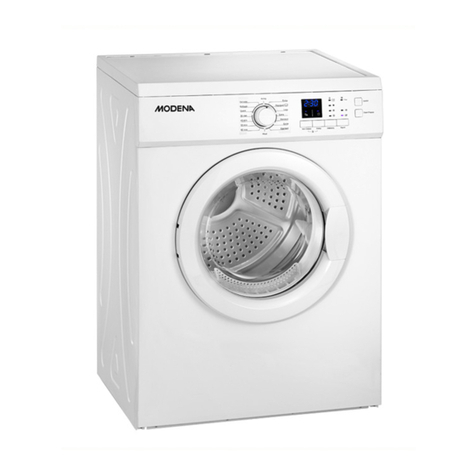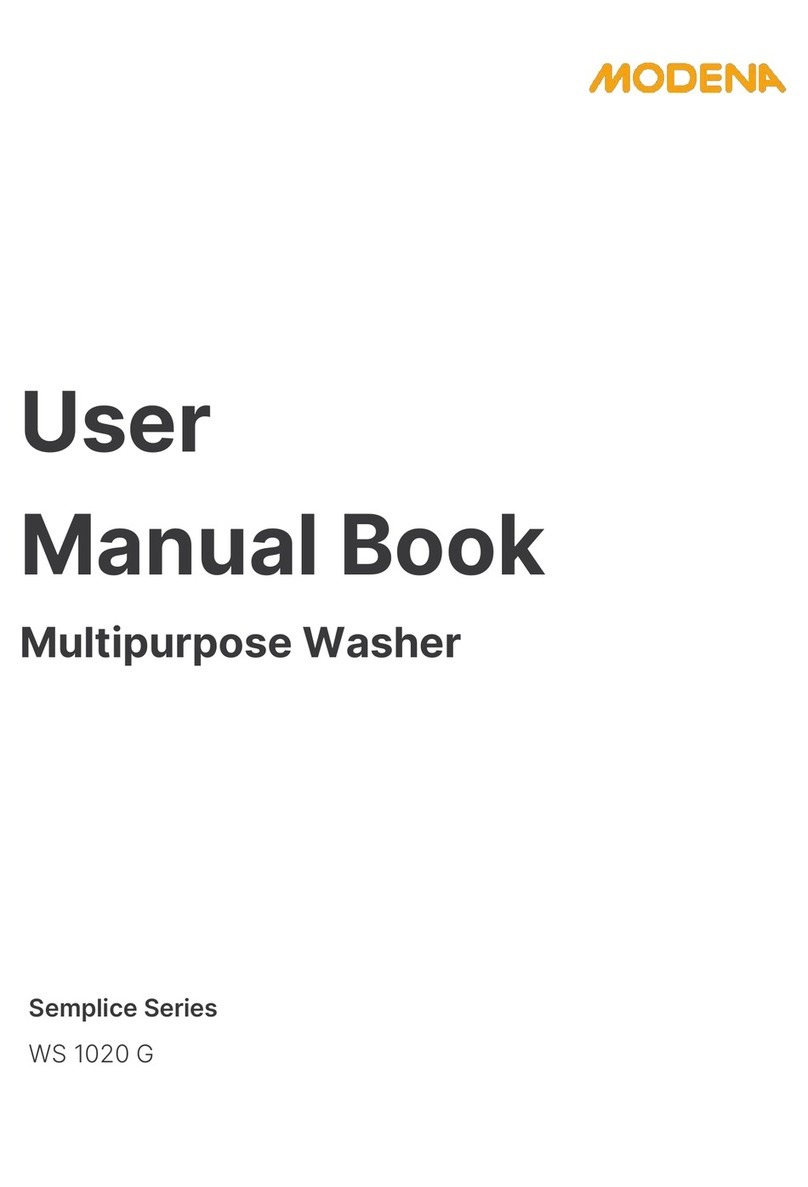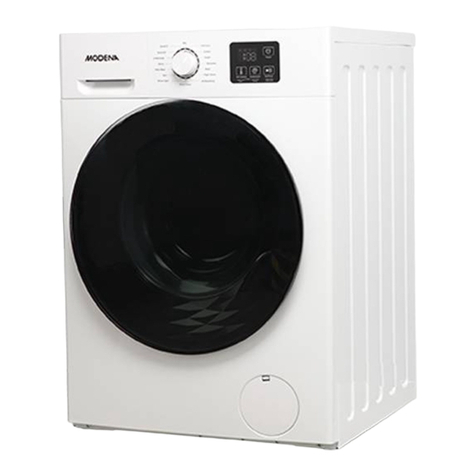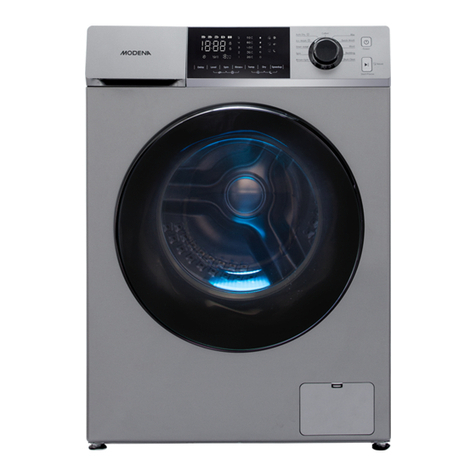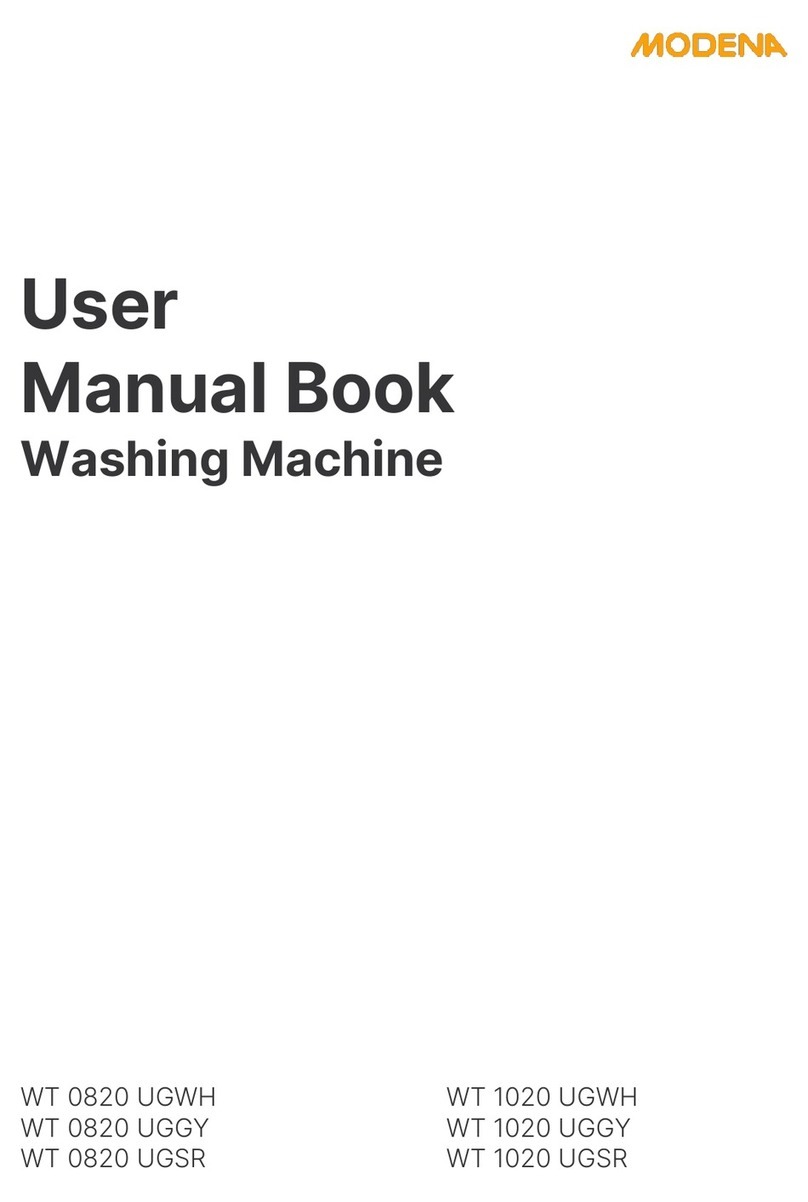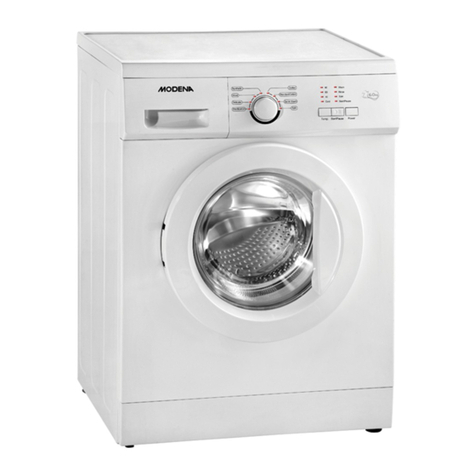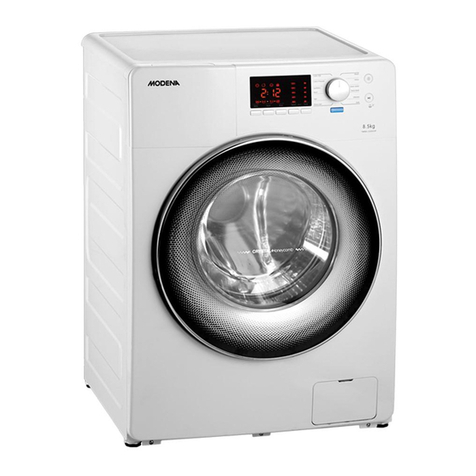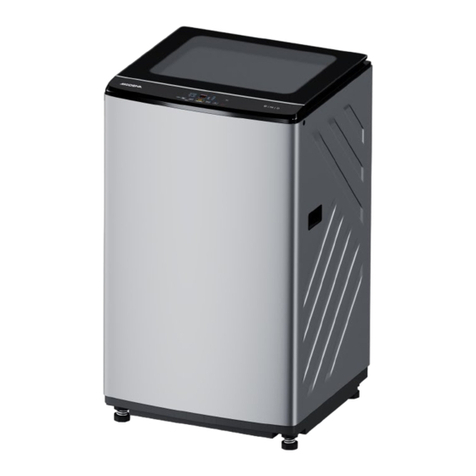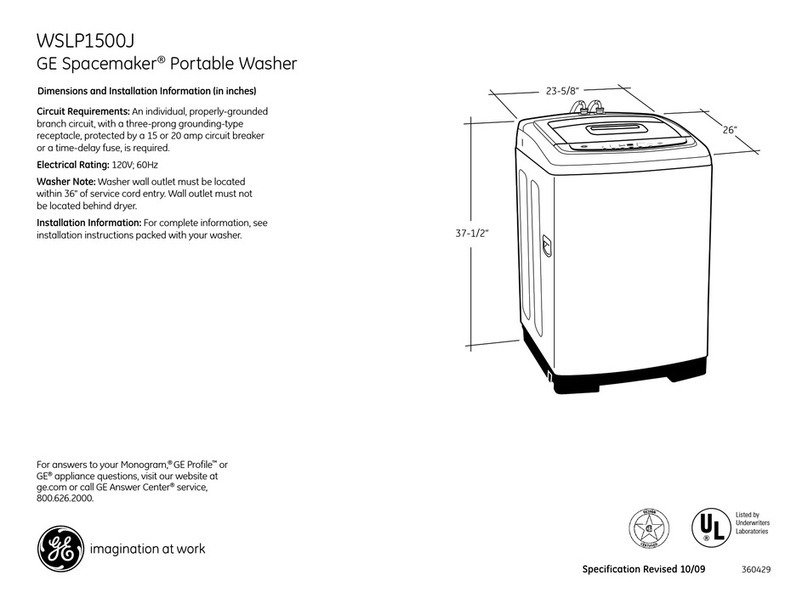3
•The appliance can only be repaired by an authorized technician.
If it is not the case, the manufacturer cannot be held liable for
any possible damage that could arise.
•If not properly repaired, the user may be exposed to danger, for
which the manufacturer cannot be held liable.
•If the power supply cable is damaged, it must be replaced by an
authorized technician to avoid any possible danger.
•In the event of faults, prolonged absences or to clean the
appliance, disconnect it from the electrical mains.
•The appliance is disconnected from the mains when:
-The power cable is unplugged from the socket.
-The central switch has been turned off.
Water Safety
•To connect the appliance to the water supply, use only new
hoses. Do not use old hoses.
•Be sure that during the washing cycle, the detergent drawer is
always closed and turn off the water tap at the end of each
washing cycle.
•It is not possible to make modifications to the appliance without
a prior authorization by the manufacturer. Before connecting the
draining hose to the sink, make sure that the water is easily
drained.
•Secure the draining hose so that it cannot move because the
strong the sink.
Positioning
The appliance must not be installed on roofs, balconies, under canopies
or in places where it may be exposed to atmospheric agents.
Correct Use
•Before using the appliance for the first time, remove the
transport securing screws from the rear (see installation
chapter). If those screws are not removed, it will damage the
